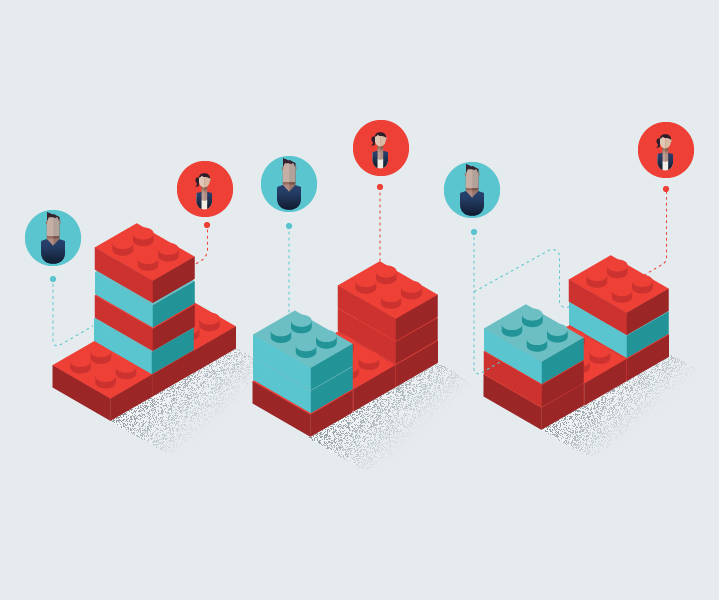
Key Characteristics of Cloud & its Uses
Table of Content:
Key Characteristics of Cloud #1
On demand and Self service - On the cloud, you can swipe a credit card and boot up a server in seconds, and you can turn on and turn off the services you need at any point of time.
Key Characteristics of Cloud #2
Ubiquitous Network Access - Unlike in the past, today, smartphones, sensors, smart TVs and even washing machines are connected to the internet. The cloud enables ubiquitous access to these devices.
Key Characteristics of Cloud #3
Location Independent Resource Pooling - In a global marketplace, customers can live anywhere in the world. The Cloud gives you the ability to give your customer the lowest latency experience.
Key Characteristics of Cloud #4
Rapid Elasticity - In the past, you needed to add infrastructure to deal with increasing load ahead of time. On the cloud, you can add and remove infrastructure based on real-time demand automatically.
Key Characteristics of Cloud #5
Pay Per Use - Cloud architectures shift.Capex to Opex You only pay for what you use. Elasticity to deal with spikes is charged only for that particular use and de-provisioned as soon as traffic reduces.
Service Models for Cloud
-
SaaS - Network, OS and Applications are virtualized and provided on demand.
-
PaaS - Network and OS are virtualised and provided on demand. Application development is made agile with managed DevOps tools for continuous integration.
-
IaaS - Only network/CPU is provided. This is the traditional Data centre model.
Major Cloud providers
- Amazon(Amazon Web Services) - Primarily IaaS but with mature managed services
- Microsoft(Azure) - strong PaaS but with a good grounding in IaaS
- IBM (Bluemix) - PaaS
Cloud Topologies

-
Public - Shared infrastructure and network. The Cloud vendor hosts multiple tenants on shared infrastructure and network pipes.
-
Private - Dedicated infrastructure & network. Think of this as a dedicated third party datacenter.
-
Hybrid - a bit of both. This is usually the most common setup in most large enterprises.
Cloud Use Case 1: Infrastructure for Development & Testing
The use of Cloud to provision infrastructure development and testing, as opposed to the more expensive and time consuming provisioning, from within your company’s datacentre is a very popular use case for a lot of companies, particularly ones that are still exploring the use of Cloud.
Cloud Use Case 2: Traffic Bursting
The use of on demand cloud infrastructure during periods of very high traffic and utilisation (like Retail and Travel websites during Christmas or Thanksgiving).
Cloud Use Case 3: Backup and Disaster Recovery
The use of Cloud based storage to do backup and disaster recovery is both, more scalable and lower in cost than traditional methods of storing data.
Cloud Use Case 4: Web Hosting
Consumer facing applications like websites are ideally deployed on the cloud since it provides scalable load balancing and automatic scaling to deal with sudden traffic bursts. Globally available content delivery networks ensure high performance no matter which part of the world the end user is in.
Cloud Use Case 5: Big Data applications
It is tremendously expensive and complex to set up modern day distributed Big Data platforms like Hadoop and Spark. Cloud platforms offer these as managed services that provide Elastic MapReduce like services to kick off Big Data pilots and projects quickly.
Cloud Use Case 6: Proofs of Concept and Innovation programs
Innovation pilots and proofs and concept often get delayed due to dependencies on provisioning infrastructure in-house. Additionally, Cloud managed services for Storage, Caching and Big Data significantly reduce time to market for new product ideas.
Hands-on Exercise: Experience the Cloud
Here is a fantastic example of Cloud, Big Data and Machine Learning at work. Why don't you head over to Google Cloud Natural Language APIand copy-paste some text and get back sentiment analysis, entity and intent extraction. This is offered as an on-demand API that is powered by massive, distributed Natural Language Processing AI algorithms that have been on massive language datasets stored on Big Data platforms.
Your Exercise: Type a paragraph of text, perhaps copied from a news article, and experience these technologies at work
Summary: On Cloud 9
-
The Cloud has democratized application development and enabled the explosion of the Startup ecosystem
-
It dematerializes access to technology and turns Capex into Opex while also significantly improving productivity
-
There are 3 flavours, SaaS, PaaS & IaaS and Amazon AWS and Microsoft Azure are the two biggest players
-
The Cloud enables companies to focus on solving customer experience problems by black-boxing infrastructure